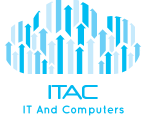Security Access Control Systems For Offices

The quest to acquire the best physical security system can sometimes be a bit overwhelming. There are far too many security access control systems available for the choice to be easy. Unfortunately, some of these systems only appear to have all the bells and whistles but offer very little in the way of actual protection. Some companies may find themselves spending a chunk of money on something worthless. Only by careful consideration of the features of the various security access control systems on offer can companies have a better chance of finding real security.
Matching Office Security Requirements
There is never a security solution that will work in every situation. That is the reason why security assessments are necessary. To define the level of control required to secure valuable data and physical assets.
A small office with very little in the way of valuable assets or sensitive information may be able to get away with only simple security systems. For the most basic security requirements, stand-alone systems can be considered. This may consist of only of intrusion alarms, video surveillance cameras, recording equipment and strategically placed lighting. Many of these systems have features which allow the software to dial pre-programmed telephone numbers whenever incidents are detected; all of these, of course, need to be verified as many sensors are prone to false alarms.
Placement of surveillance equipment and detectors need to be where they will most likely deter undesirable activities such as unauthorized access and theft. Thus, in offices, the places where money changes hands are always covered. Points of entry and exit are monitored, as are areas where conditions are most likely to pose risks or dangers to property and personnel. Here you’ll find tips on protecting mobile or home-based offices.
In larger offices, even if there are not much physical assets, there are scores of employees and it is likely that there more sensitive information which needs to be secured. To cope with the increased security requirements, large offices usually have more complex security systems. First off there will be full featured access control systems which may use biometric, near field, magnetic stripe or a combination of different technologies to assign access limitations.
There would be more video surveillance cameras and recording equipment, which would likely be capable of HD image capture, license plate capture and other advanced features. Different types of alarms may be installed such as those that react to glass breakage, motion, temperature, or contact breakage.
Monitoring and control of entire security systems at large offices are usually done 24/7 through control software. Where the highest level of security is required, security companies provide human monitoring services round the clock. The most advanced systems will also likely have provisions for remote access and control through computers and smart phones linked to the internet.
Data access in big offices is usually controlled using a combination of passwords, biometric sensors, and access control badges. The office network will likely be protected by firewalls and regular data back-up to an offsite location.
Whatever size office you have, you can find an appropriate mix of access control and security systems; you may have to spend a bit of time searching, but it is there.
